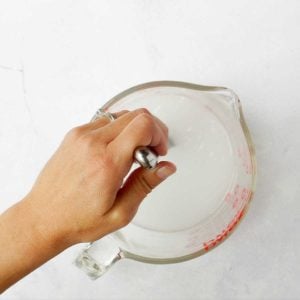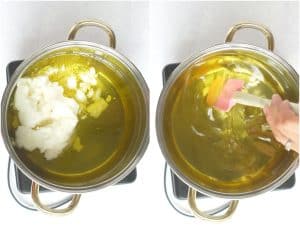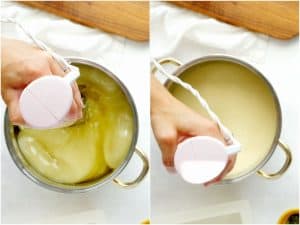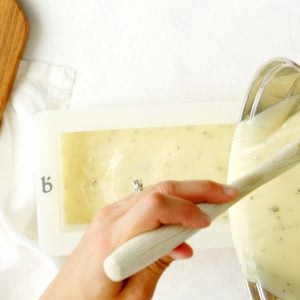Summer Basil Cold Process Soap Recipe
The perfect kitchen soap recipe, this cold process formula is moisturizing, easy to make, and adds dried basil for a twist.
Equipment
Ingredients
- 4.28 ounces lye
- 10 ounces water
- 12 ounces olive oil
- 11 ounces coconut oil
- 3 ounces avocado oil
- 2 ounces shea butter
- 2 ounces castor oil
- 2 teaspoons dried basil
- 1 teaspoon basil essential oil
Instructions
- Make lye water. Measure out the lye and the water in separate, non-reactive containers, using a digital scale. Mix the lye and the water and stir until dissolved, adding the lye to the water, never the other way around. The lye solution will heat up as a result of a chemical reaction. Be careful of fumes, heat, and the corrosive solution. Set the cup aside to cool in a very safe place.

- Measure oils. Measure out the oils in separate containers and place them in a pot. Melt over medium-low heat until fully melted and about degrees. The shea butter will take longer to melt, but keep the oils over the heat until it is fully melted. Remove from the heat and set aside to cool.

- Check the temperature of the oils and water. When they have cooled to 90-110 degrees, you are ready to blend. Before blending, have your soap mold, basil oil, and dried basil ready to go.
- Blend to trace. Pour the lye solution into the melted oils and blend with a stick blender until you reach a trace. Trace is reached when the soap forms a batter and the stick blender leaves a trail when dragged across the top of the pot. Once the trace is reached, add the basil oil and dried basil. Stir in by hand. I

- Pour into mold. Immediately pour the soap batter into the mold. Place on the counter or other safe, room temperature place to cure for 24 hours.

- Turn out the loaf of soap and slice it into bars. Allow to bars to cure in a well-ventilated space for at least 2 weeks before using. This soap has a high percentage of olive oil, so it may seem soft at first. It will firm up within the first two days, but allow to cure for at least 3 weeks for the best results.
Notes
Want to resize this recipe? Here are the percentages you'll need: olive oil- 40%; coconut. oil- 36.67 %; shea butter- 6.67%; castor oil- 6.67%; avocado oil-10%. The superfat percentage is 5%.
Be sure to observe all soap safety precautions! Always work in a well-ventilated space, free of distractions. Wear eye protection, gloves, and long sleeves. Lye water and raw soap batter are both corrosive and can be fatal if consumed.
Love the idea of natural additions to your soap? You'll love this natural soapmaking course that dives into adding herbs, flowers, and more.
Servings: 3 pounds soap